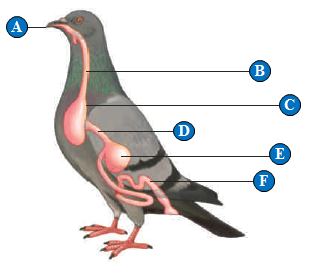
Figure 39.3C
The storage organ indicated by the letter "C" is called the ____.
A. mouth
B. crop
C. gizzard
D. rumen
E. cloaca
Answer: B
You might also like to view...
If an adult human suffered a traumatic injury, could their notochord be damaged?
A. Yes; because the notochord is deep within the body only a severe injury could damage it. B. No; the notochord is encased in bone and it not susceptible to damage. C. Yes; damage to the notochord often results in paralysis. D. No; adult humans do not have a notochord. Clarify Question · What is the key concept addressed by the question? · What type of thinking is required? Gather Content · What do you already know about the notochord? Choose Answer · Given what you now know, what information and/or problem solving approach is most likely to produce the correct answer? Reflect on Process · Did your problem-solving process lead you to the correct answer? If not, where did the process break down or lead you astray? How can you revise your approach to produce a more desirable result?
A plasmid cloning vector and DNA fragments containing the XYZ gene, each digested with the same restriction
enzyme, are mixed with DNA ligase. Which product(s) will result?
a. recombinant plasmids only b. nonrecombinant plasmids only c. joined-together copies of the DNA fragment containing the XYZ gene only d. a mixture of recombinant plasmids, nonrecombinant plasmids, and joined-together copies of the DNA fragment containing the XYZ gene e. no reaction will occur because DNA polymerase rather than DNA ligase is needed to insert the DNA fragments into the plasmid cloning vector
It is believed that cetaceans evolved from:
a. a terrestrial mammal. b. a pinniped. c. fishes. d. polychaetes. e. dinosaurs.
Oxygen and carbon dioxide bind to the same sites on the hemoglobin molecule at different times.
Answer the following statement true (T) or false (F)